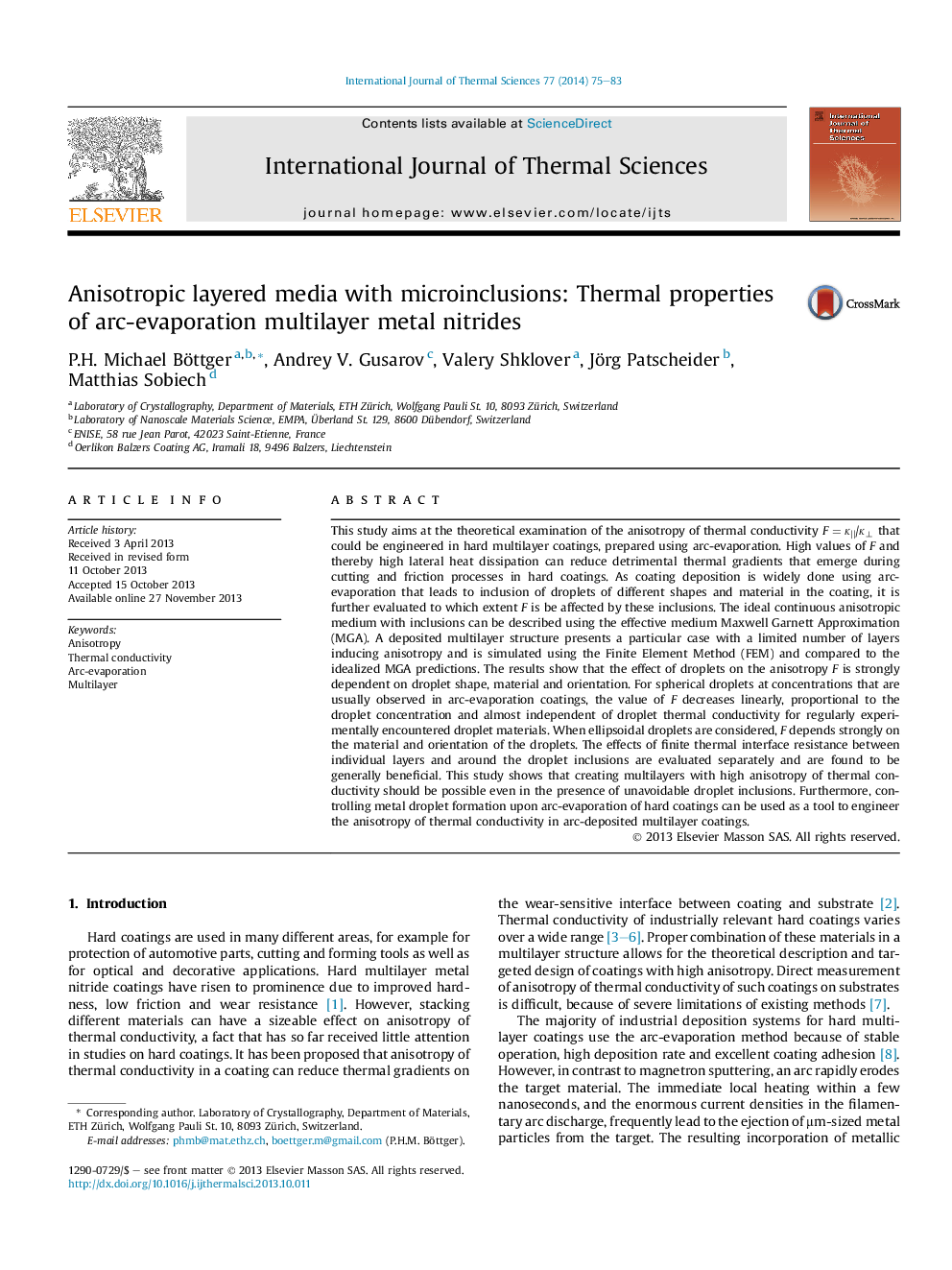| Article ID | Journal | Published Year | Pages | File Type |
|---|---|---|---|---|
| 668444 | International Journal of Thermal Sciences | 2014 | 9 Pages |
•High thermal anisotropy can be induced in hard multilayer coatings.•Influence of commonly observed arc-evaporation droplets is examined.•Theory of continuous medium agrees with FEM simulations of layered structure.
This study aims at the theoretical examination of the anisotropy of thermal conductivity F = κ||/κ⊥ that could be engineered in hard multilayer coatings, prepared using arc-evaporation. High values of F and thereby high lateral heat dissipation can reduce detrimental thermal gradients that emerge during cutting and friction processes in hard coatings. As coating deposition is widely done using arc-evaporation that leads to inclusion of droplets of different shapes and material in the coating, it is further evaluated to which extent F is be affected by these inclusions. The ideal continuous anisotropic medium with inclusions can be described using the effective medium Maxwell Garnett Approximation (MGA). A deposited multilayer structure presents a particular case with a limited number of layers inducing anisotropy and is simulated using the Finite Element Method (FEM) and compared to the idealized MGA predictions. The results show that the effect of droplets on the anisotropy F is strongly dependent on droplet shape, material and orientation. For spherical droplets at concentrations that are usually observed in arc-evaporation coatings, the value of F decreases linearly, proportional to the droplet concentration and almost independent of droplet thermal conductivity for regularly experimentally encountered droplet materials. When ellipsoidal droplets are considered, F depends strongly on the material and orientation of the droplets. The effects of finite thermal interface resistance between individual layers and around the droplet inclusions are evaluated separately and are found to be generally beneficial. This study shows that creating multilayers with high anisotropy of thermal conductivity should be possible even in the presence of unavoidable droplet inclusions. Furthermore, controlling metal droplet formation upon arc-evaporation of hard coatings can be used as a tool to engineer the anisotropy of thermal conductivity in arc-deposited multilayer coatings.
